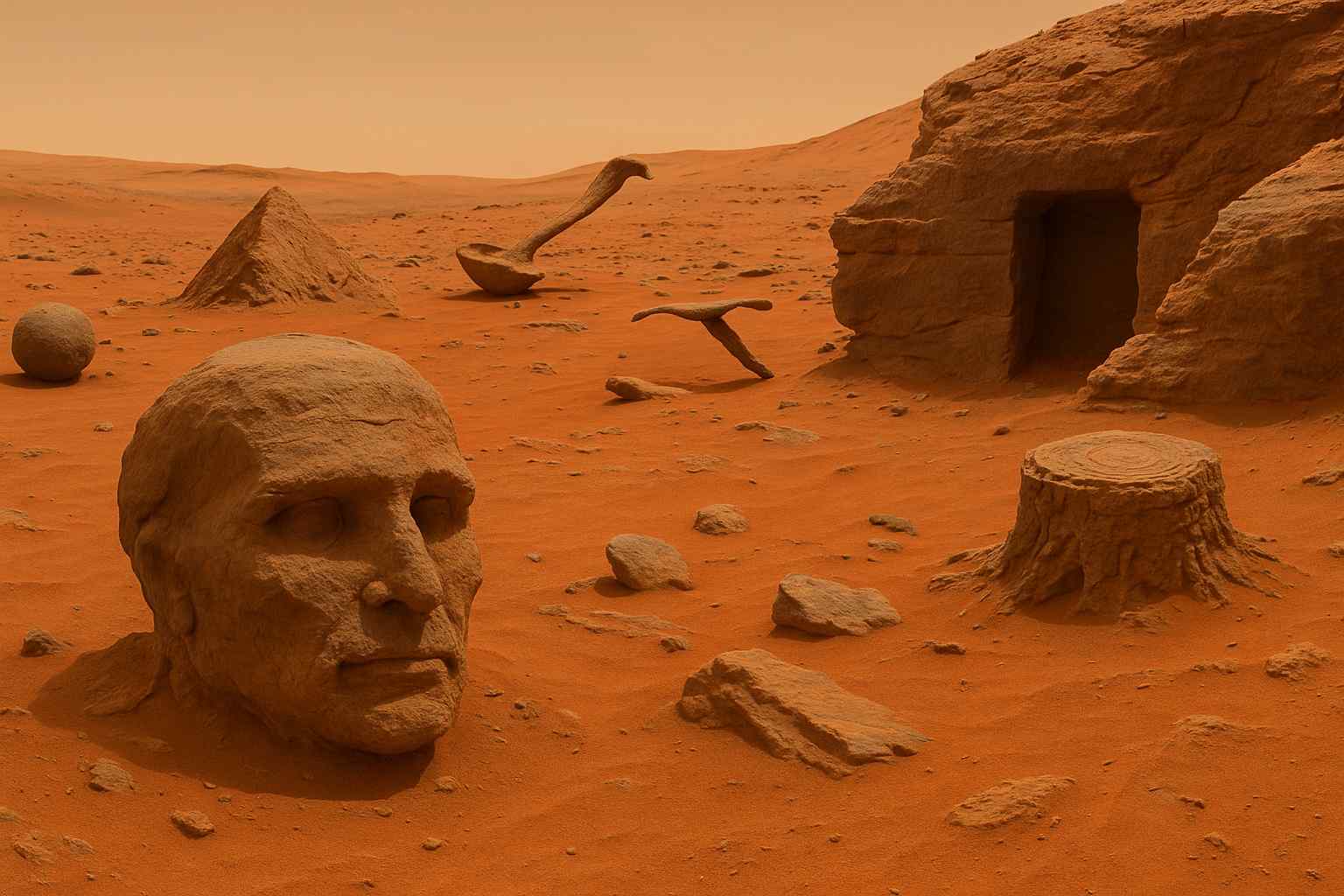Mars has always captivated our imagination, but modern space exploration has made it even more intriguing. High-resolution Mars anomalies images from NASA’s rovers and orbiters often reveal formations that resemble familiar objects—from faces to doorways—leading to fascinating debates.
While most of these anomalies have logical geological explanations, they spark curiosity about what lies beneath the Red Planet’s dusty surface. Here are 15 of the strangest things spotted on Mars that look like they shouldn’t be there.
1. The “Face on Mars”
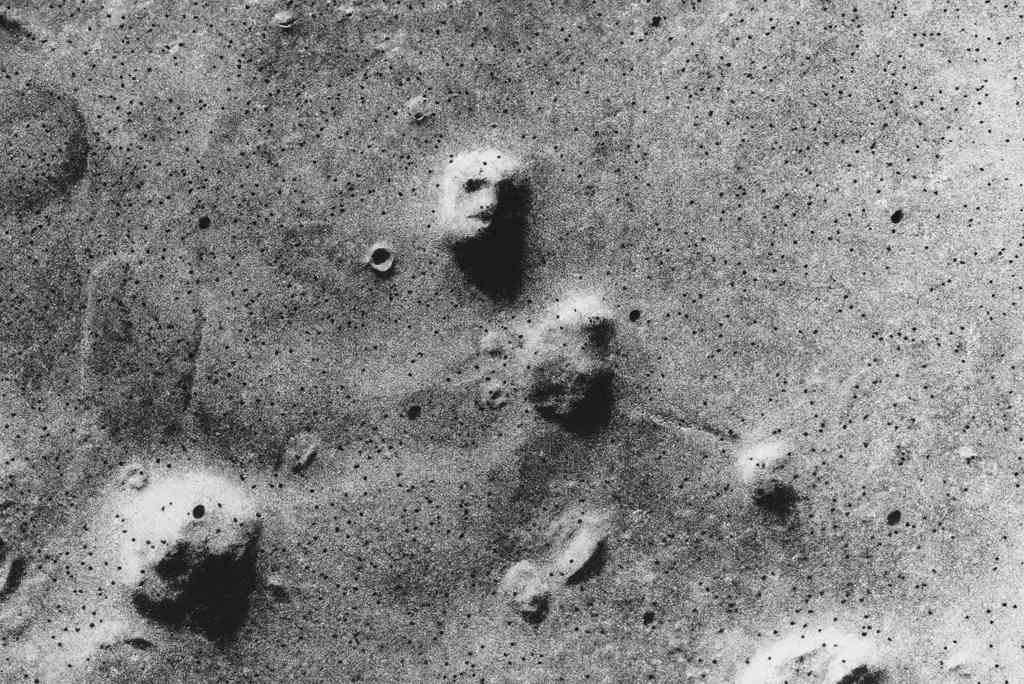
One of the most iconic Mars anomalies images , the “Face on Mars,” was first photographed by NASA’s Viking 1 orbiter in 1976. The image appeared to show a massive humanoid face, sparking decades of speculation about alien civilizations.
Later, high-resolution images from the Mars Reconnaissance Orbiter revealed it as a natural mesa with shadows creating facial illusions. This phenomenon is a classic example of pareidolia—our brain interpreting random patterns as familiar shapes. Even though it’s been debunked, the face remains a pop culture symbol of extraterrestrial mystery. (NASA)
2. The “Doorway” Rock Formation
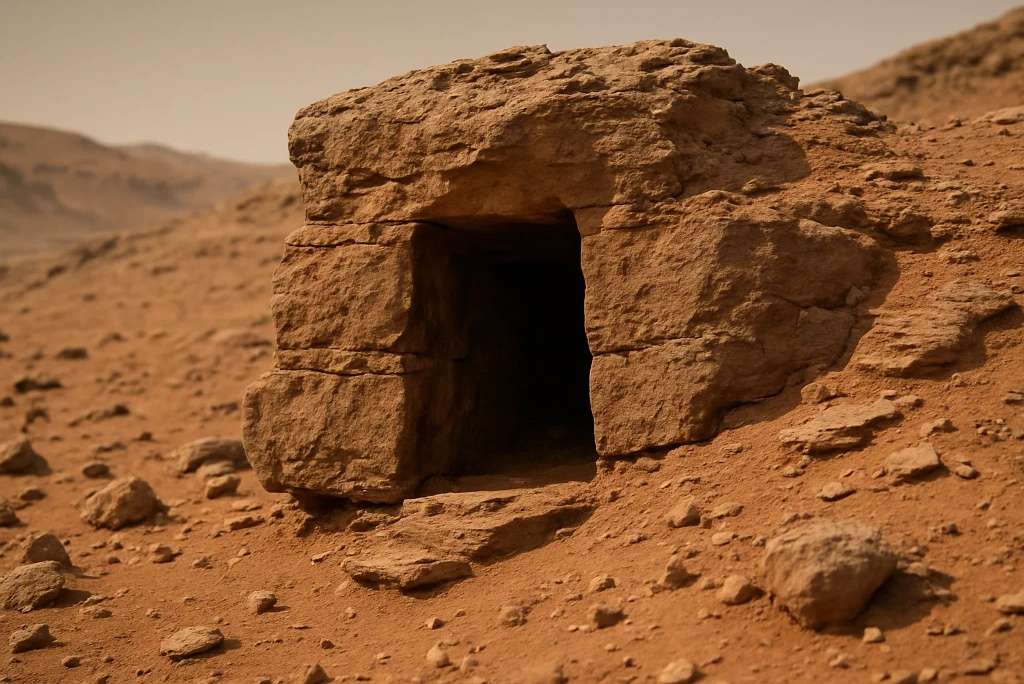
In 2022, NASA’s Curiosity rover captured an image resembling a doorway carved into a cliffside. The feature sparked theories about ancient Martian structures. However, scientists clarified that it’s likely the result of natural fracturing and erosion in the rock.
This “doorway” measures only a few centimeters high, ruling out the possibility of it being an entrance. Its clean, rectangular shape is still fascinating, highlighting how wind and seismic activity can mimic artificial designs. (BBC News)
3. The “Spoon” in Gale Crater
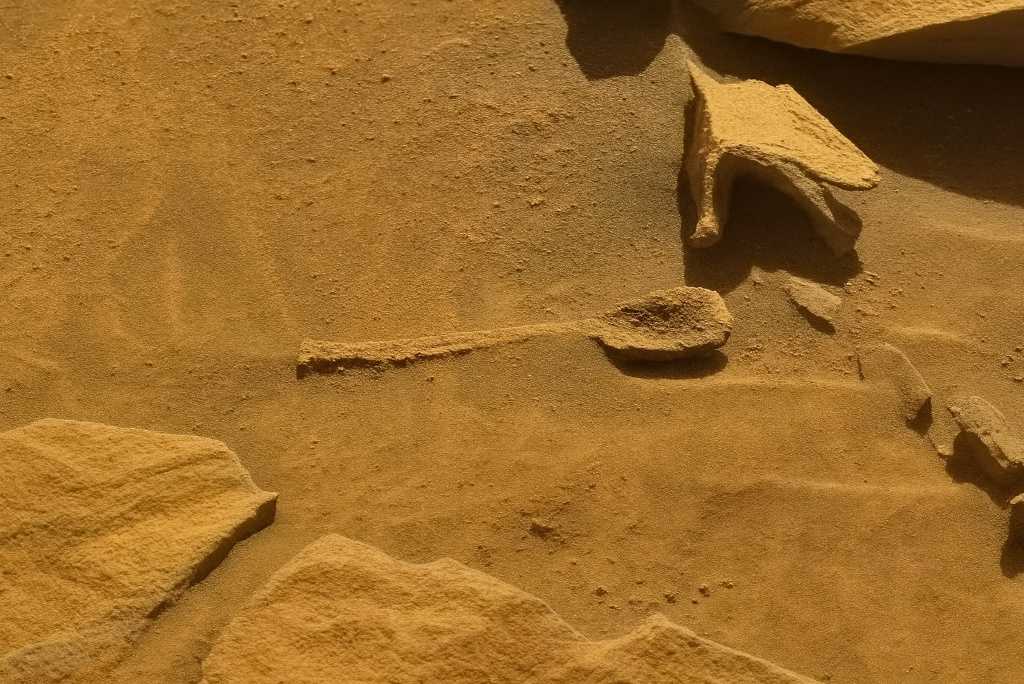
In 2015, images from the Curiosity rover revealed a rock that appeared to be a floating spoon. Its thin, curved shape made it an internet sensation. Scientists explain it as a rock formation shaped by wind erosion, with its thin neck eroding faster than its broader “bowl” area.
While it’s not actually levitating, the angle of the photo enhances the illusion. Such formations are examples of ventifacts—rocks sculpted by wind-driven sand over long periods. (NASA Jet Propulsion Laboratory)
4. The “Blueberries” of Meridiani Planum
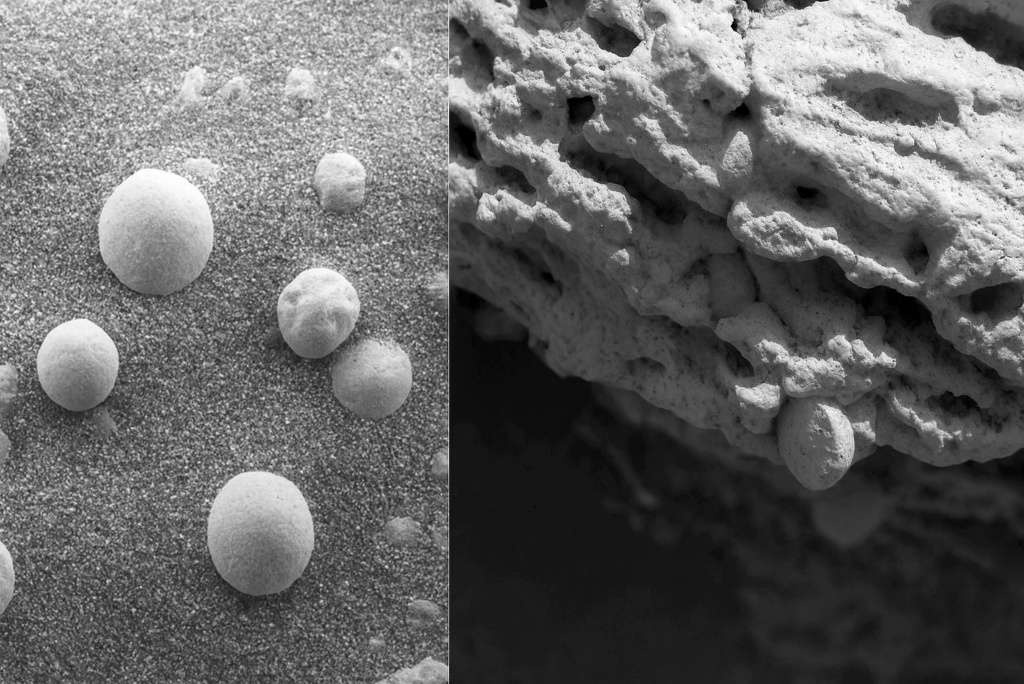
In 2004, NASA’s Opportunity rover discovered tiny, spherical formations nicknamed “blueberries.” These hematite-rich concretions are formed by the action of mineral-laden water, suggesting Mars once had conditions suitable for life.
Their abundance and uniformity puzzled scientists initially, but their composition provides evidence of ancient water activity. These “blueberries” are now a key piece in understanding Mars’ wetter past. (NASA Science)
5. A “Pyramid” Structure
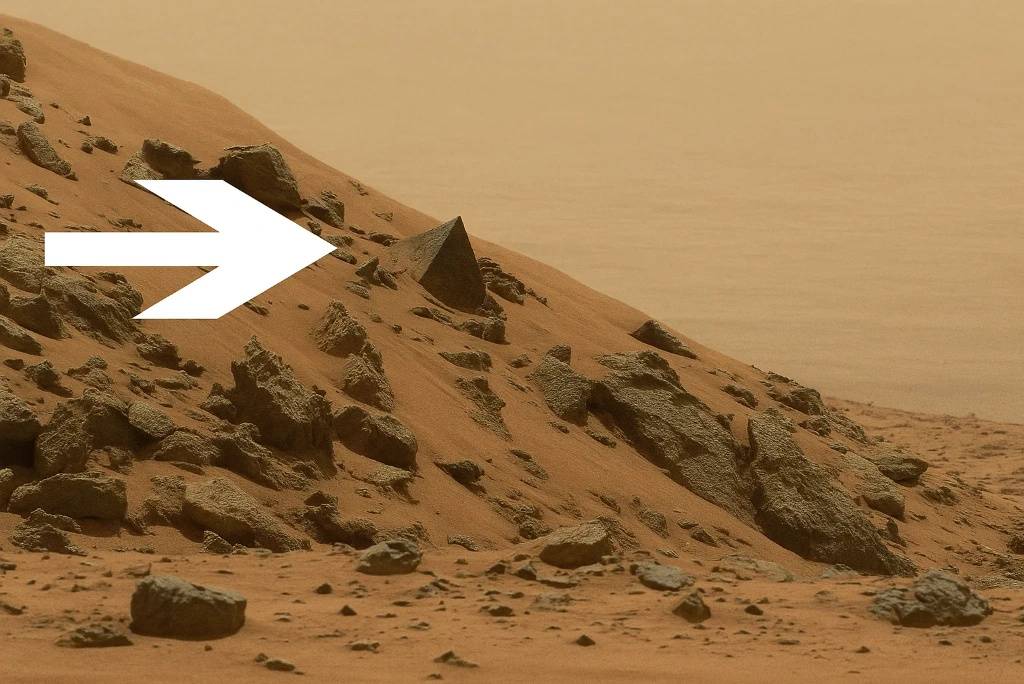
A pyramid-like rock was photographed by Curiosity in 2015, leading some to claim evidence of ancient Martian architecture. However, geologists point out that such shapes can form naturally through fracturing and erosion.
The sharp edges and triangular profile are coincidental, though they fuel imaginative theories about intelligent design. This formation highlights how our pattern-recognition instincts often outpace scientific explanations. (National Geographic)
6. The “Legless Lizard” Rock
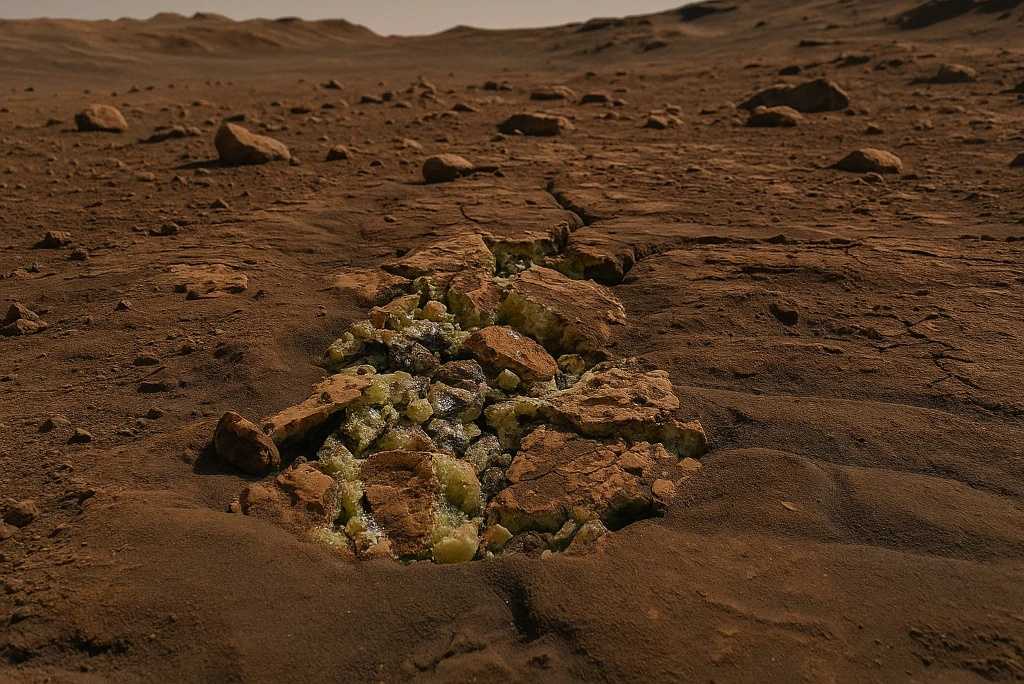
In 2013, a Curiosity image seemed to show a small lizard-like creature on Mars. This fueled online claims of living organisms. NASA scientists quickly dismissed these as illusions caused by rock shadows and shape pareidolia.
Close analysis revealed it was nothing more than an oddly shaped rock. Such sightings underscore the human tendency to project familiar life forms onto alien landscapes. (NASA)
7. The “Cannonball” Spheres in Gale Crater
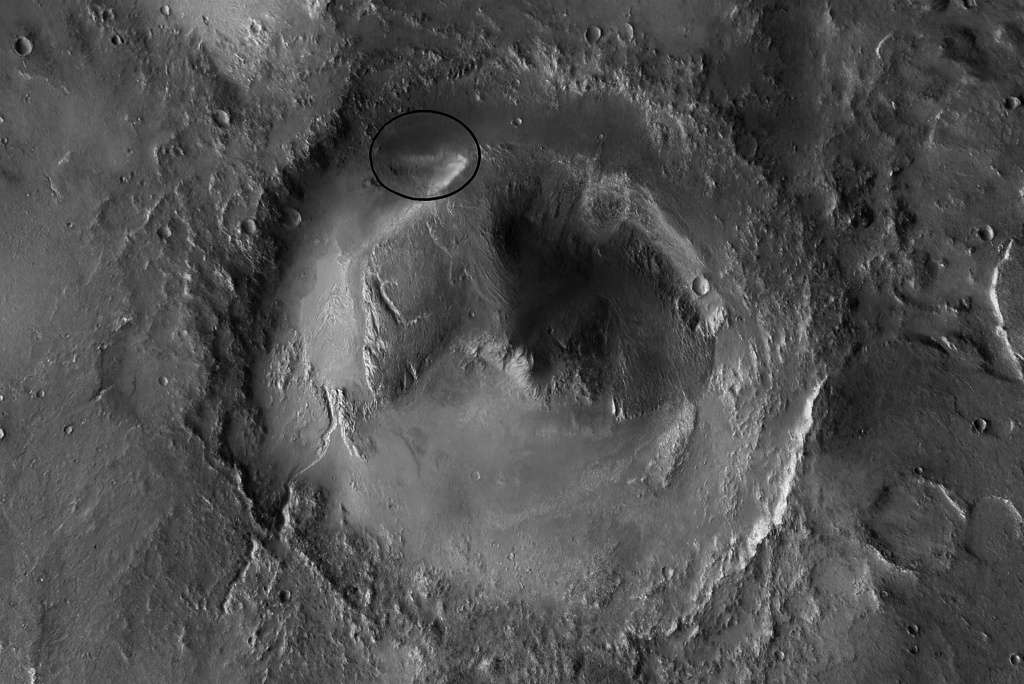
Curiosity discovered nearly perfectly spherical rocks in 2016, resembling cannonballs scattered across the Martian surface. These are actually concretions—hard mineral masses formed within sedimentary layers when groundwater deposits minerals over time.
Their near-perfect shape makes them stand out in the rugged Martian terrain, adding to the planet’s mysterious geological story. The spheres provide insights into Mars’ aqueous past, helping scientists piece together how water once influenced its geology. (Space.com)
8. The “Thigh Bone” Rock Illusion
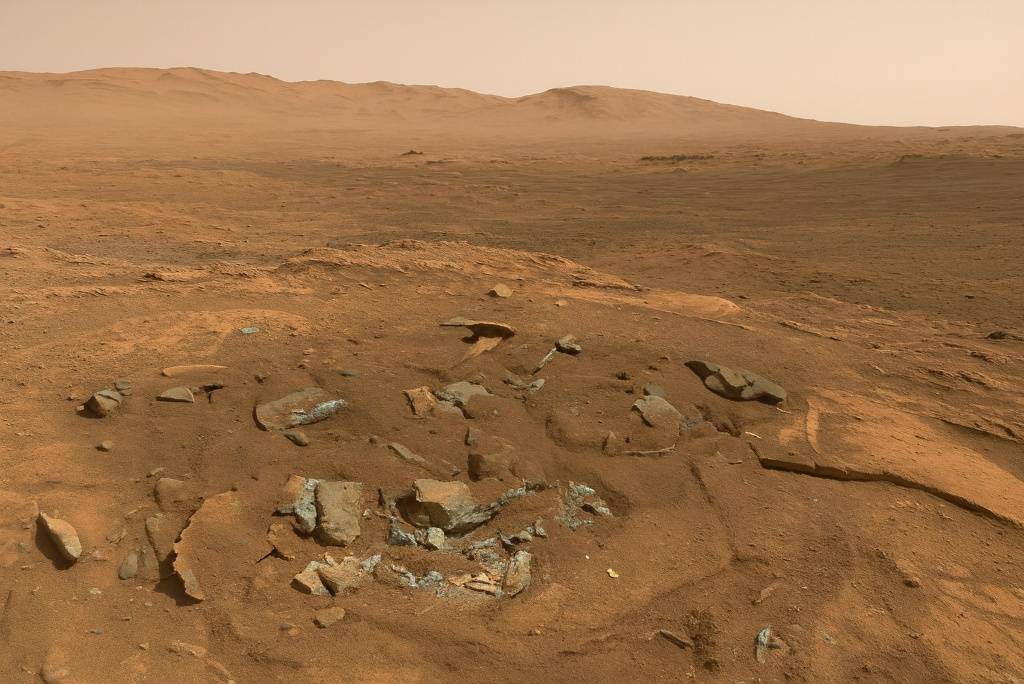
In 2014, a rock shaped like a human femur was spotted by Curiosity. Its bone-like appearance fueled speculation about Martian fossils and ancient creatures.
However, NASA scientists attribute it to erosion and fracturing, emphasizing that Mars’ surface processes can produce surprisingly familiar shapes. This peculiar resemblance reinforces how visual illusions often spark theories about alien life. (NASA)
9. The “Stonehenge” Circle of Rocks
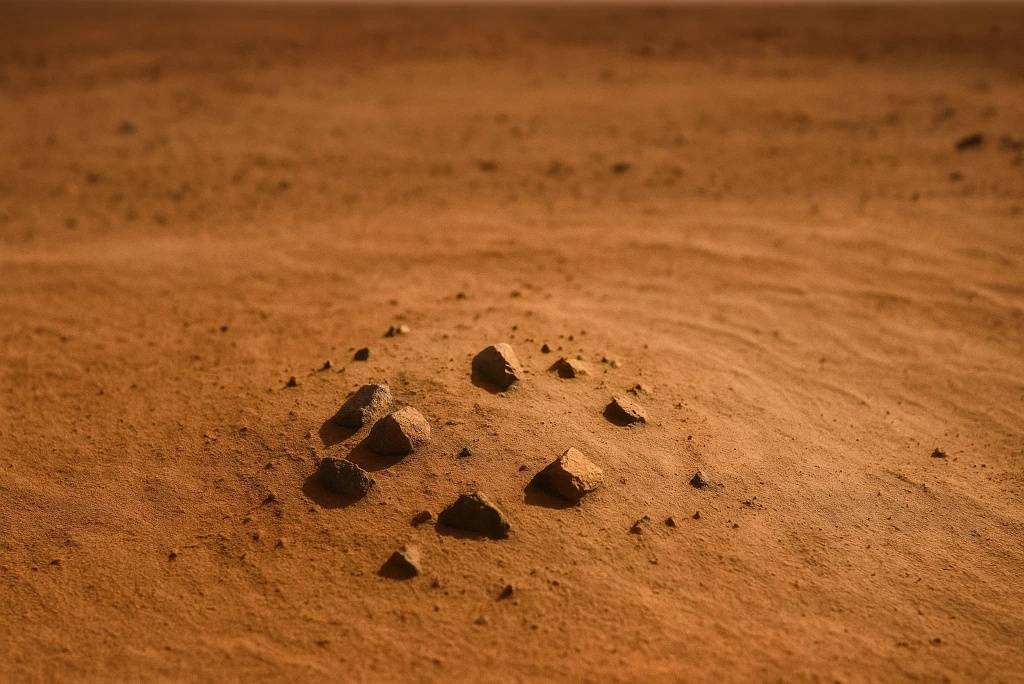
In 2018, satellite images revealed a circular arrangement of rocks resembling Earth’s Stonehenge, baffling some observers. This feature, located in the Mawrth Vallis region, is believed to be a natural consequence of impact cratering and weathering.
The ring formation, while eye-catching, serves as a reminder that natural processes can mimic intentional design, leading to fascinating debates about its origins. (The Guardian)
10. The “Tree Stump” Rock Formation
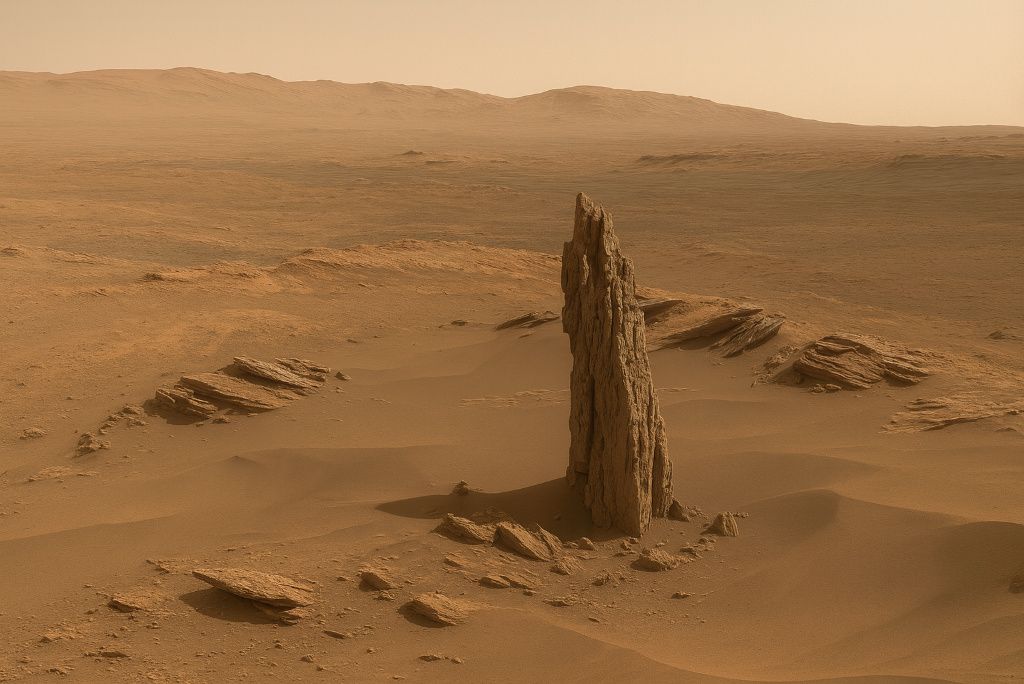
In 2016, Curiosity photographed a rock resembling a fossilized tree stump, leading some to argue it hinted at ancient vegetation. Experts explained it as an eroded mudstone outcrop shaped by sedimentary processes.
Its layered appearance may suggest ancient water-related activity, but there’s no evidence it was biological. The structure remains one of the most visually striking finds so far. (NASA JPL)
11. The “Bear Face” Crater Image Discovery
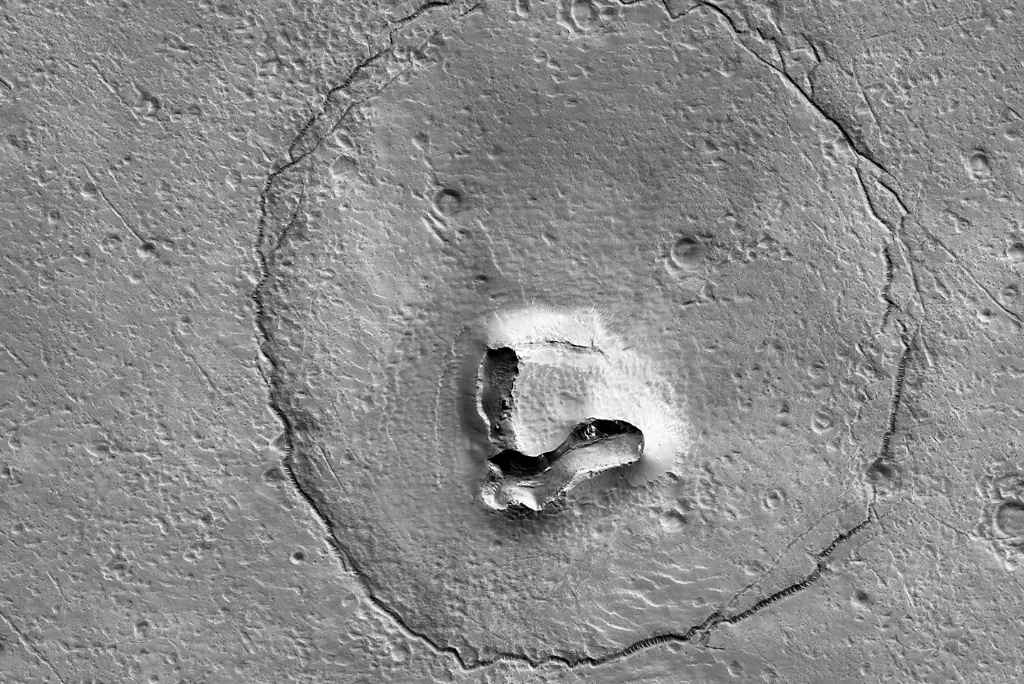
In 2023, the Mars Reconnaissance Orbiter captured an image of a crater resembling a bear’s face. Its “eyes” are two smaller craters, and the “snout” is a collapsed mound shaped over time.
This example of pareidolia shows how our minds interpret random arrangements as recognizable images. Such formations are fun yet scientifically significant, revealing the planet’s dynamic and complex surface evolution. (Smithsonian Magazine)
12. The “Glass Tubes” Dune Illusion Explained
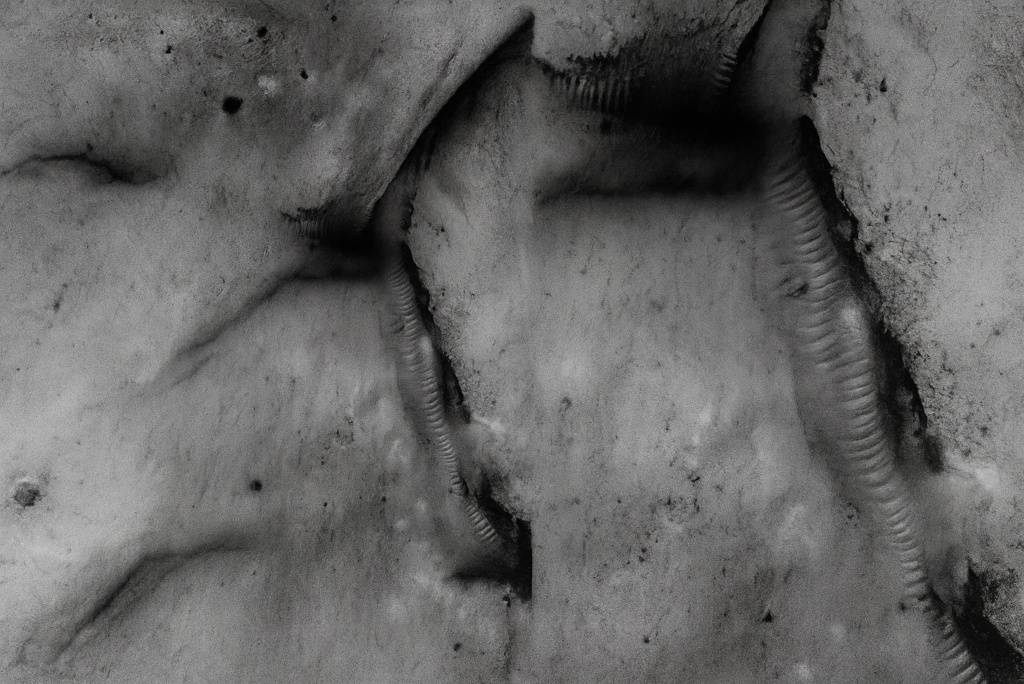
Images from Mars Global Surveyor once appeared to show translucent, tube-like structures on the surface, leading to wild theories about Martian transport systems or pipelines.
Later analysis revealed these were rows of sand dunes illuminated at certain angles, giving the illusion of tubes. This optical effect underscores the challenges of interpreting alien landscapes from orbital imagery, often creating misleading impressions. (NASA)
13. The “Crab Monster” Rock Shadow Appearance
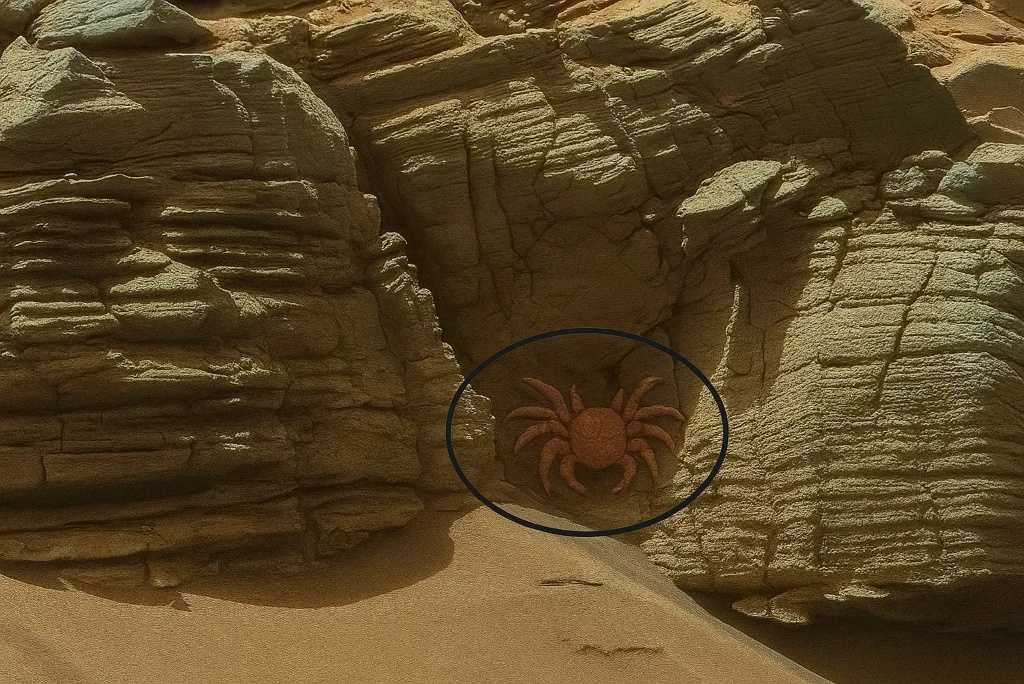
In 2015, Curiosity captured an image that many claimed looked like a giant crab hiding in a cave. NASA quickly explained this as a rock formation created by shadows and lighting effects interacting with rough terrain.
This example highlights how pareidolia thrives when viewing low-resolution or shadowed imagery in alien environments, sparking viral discussions and conspiracy theories online. (National Geographic)
14. The “Fossilized Spine” Rock Feature Illusion
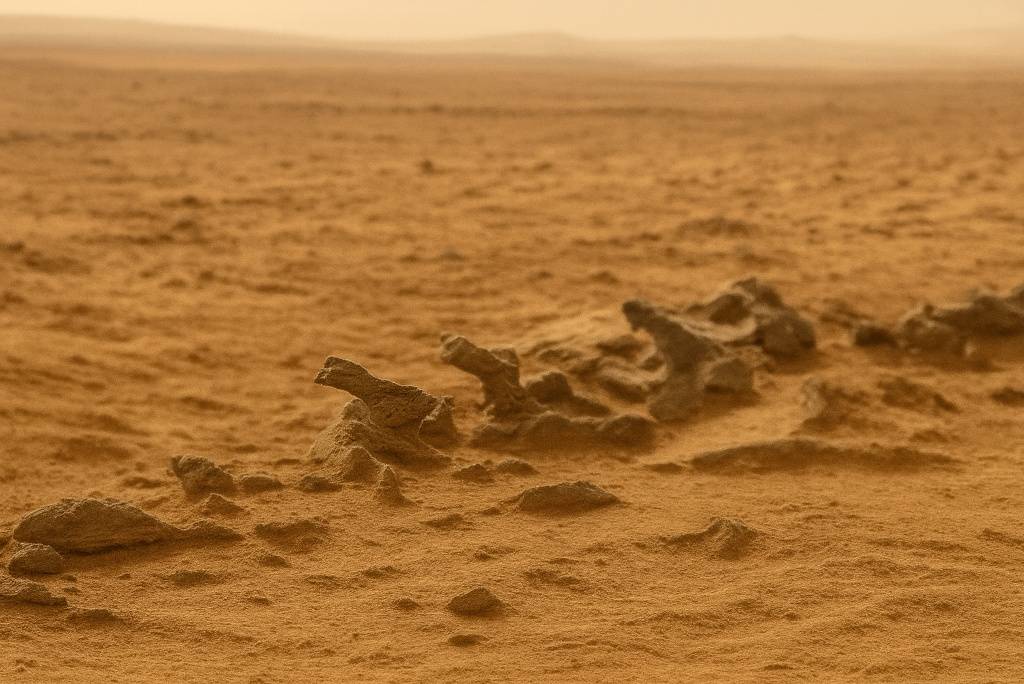
Another 2017 rover image showed what looked like a segmented spine protruding from the ground. Some speculated it might be evidence of past Martian life or ancient fossilized remains.
However, geologists identify it as a common type of sedimentary rock with fractures giving it a spine-like appearance. While intriguing, no biological explanation holds up under detailed scientific review or peer analysis. (Space.com)
15. The “Wheel Tracks” Natural Grooves Explained
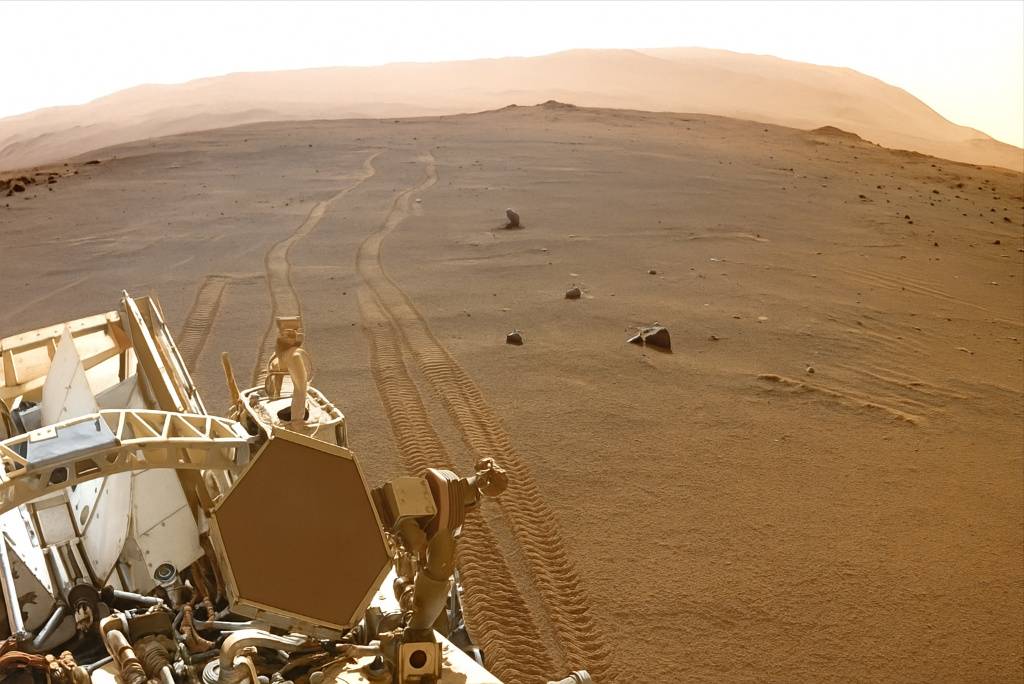
In some rover images, natural grooves in Martian terrain have been mistaken for vehicle tracks from unknown sources or previous explorers. These linear features are actually caused by repeated wind erosion or dried channels carved over long periods.
Comparing them with actual rover tracks reveals significant differences in depth and uniformity, proving their natural origin beyond reasonable scientific doubt. (NASA)
Disclaimer: This article is for informational purposes only and does not claim the existence of extraterrestrial life or artificial structures on Mars. Scientific interpretations are based on current data and may evolve with future discoveries.

